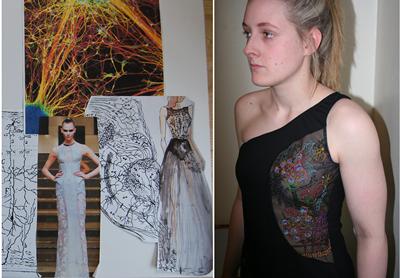Schizophrenia
Schizophrenia directly affects 1% of the population at some stage during their life and many more through its impact on families and friends. Because it usually comes on in teens and twenties, it also has major effects on development of relationships and earning capacity. It involves problems with beliefs about the world, distressing perceptions (e.g. ‘voices') and misinterpretations of people's intentions (paranoia). A number of social circumstances and psychological problems make it more likely to occur and so interventions involve work with understanding and coping with these. Medication can help in this process and in reducing the chance of relapse when recovery occurs as is very frequent
More information on psychosis is available at a website developed by Southampton researchers for the NHS:
http://www.emotionalwellbeing.southcentral.nhs.uk/conditions/psychosis.
Research at the University of Southampton
A number of researchers at the University of Southampton are working on assessing novel psychological and service developments led by Professor David Kingdon (http://www.som.soton.ac.uk/about/staff/listing/profile.asp?dgk).
These studies are developed from our previous work that shows that cognitive behaviour therapy (CBT), developed for depression, can be adapted for use in psychoses such as schizophrenia. This involves ways of helping people who experience voices, delusions and negative symptoms (low motivation and social withdrawal) to understand how they develop and cope with them better. Current studies involve multi-centre randomised controlled studies developing and evaluating the use of an intervention to reduce worry about paranoia - although the person may be certain that they are, for example, being conspired against, learning to cope with this worry using techniques developed in anxiety management, is a promising new approach. The MRC are funding a study in association with Oxford University to evaluate this. Another study is looking at mindfulness groups for people hearing distressing voices and a further study is examining whether people who have not made a full response to optimal medication (a drug called Clozapine) can benefit from the addition of a course of individual therapy (CBT). There is also work going on to improve services by assessing the re-design of them to increase the focus on community as opposed to hospital care.
Changing Minds through Neuroscience Inspired Fashion
A collaboration between Winchester School of Art (WSA) and the Southampton Neuroscience Group (SoNG) was established with an aim to address the stigma and misconceptions surrounding mental health.
Each year the starting point for the project is a visit from SoNG members to Winchester School of Art to talk about our research which spans synaptic function, neurodegeneration and cognitive neuroscience. The importance of this basic research to neurological and psychiatric conditions is discussed and then some suggestions are made for topics that the students might like to consider as the design concept for their garment. A very important aspect of the project is that the design is carefully thought through in terms of the underlying neurobiology and the impact of the disease. To help with this the students visit the research labs and have the chance to discuss their ideas further with SoNG postdoctoral fellows and postgraduates.
This project has provided a stimulating, engaging and creative way to engage in conversations about mental health issues.
Designer: Amber Newton
"I have based my concept on the art of individuals with schizophrenia and the effects of its symptoms. The work of artist Melvin Way, who creates complex drawings of scientific and mathematical equations, inspired me to create the print on the front of the jacket. I also looked at Agnes Richter, who was held as a patient in an asylum during the 1890's, she embroidered her thoughts and feelings into a straitjacket. From this I have created a Victorian style silhouette and introduced smocking and embroidery onto my jacket."
Designer: Nicola Day
Nikki Day researched the morphology of different classes of cortical neurons and then embroidered images to convey the emerging idea that this is a disease of aberrant connectivity. Her dress incorporated extremely detailed needlework depicting neural circuits inspired by the classic histological drawings of Ramon Y Cajal.
"I have based my concept on the art of individuals with schizophrenia and the effects of its symptoms. The dress is tight and slightly restricts movement to reflect the effect these brain cell malfunctions can have in limiting people with the disease in everyday life. The intricate needlework draws you in and before you know it you are discussing how the cortical neural circuits are formed. The garment provides an opportunity to break down the stigma that often surrounds mental health disorders by illustrating the biological mechanisms of the conditions, demystifying them and thus rendering them less frightening."
Supported by the University of Southampton Multidisciplinary Research Strategy https://www.southampton.ac.uk/research/usrg/



